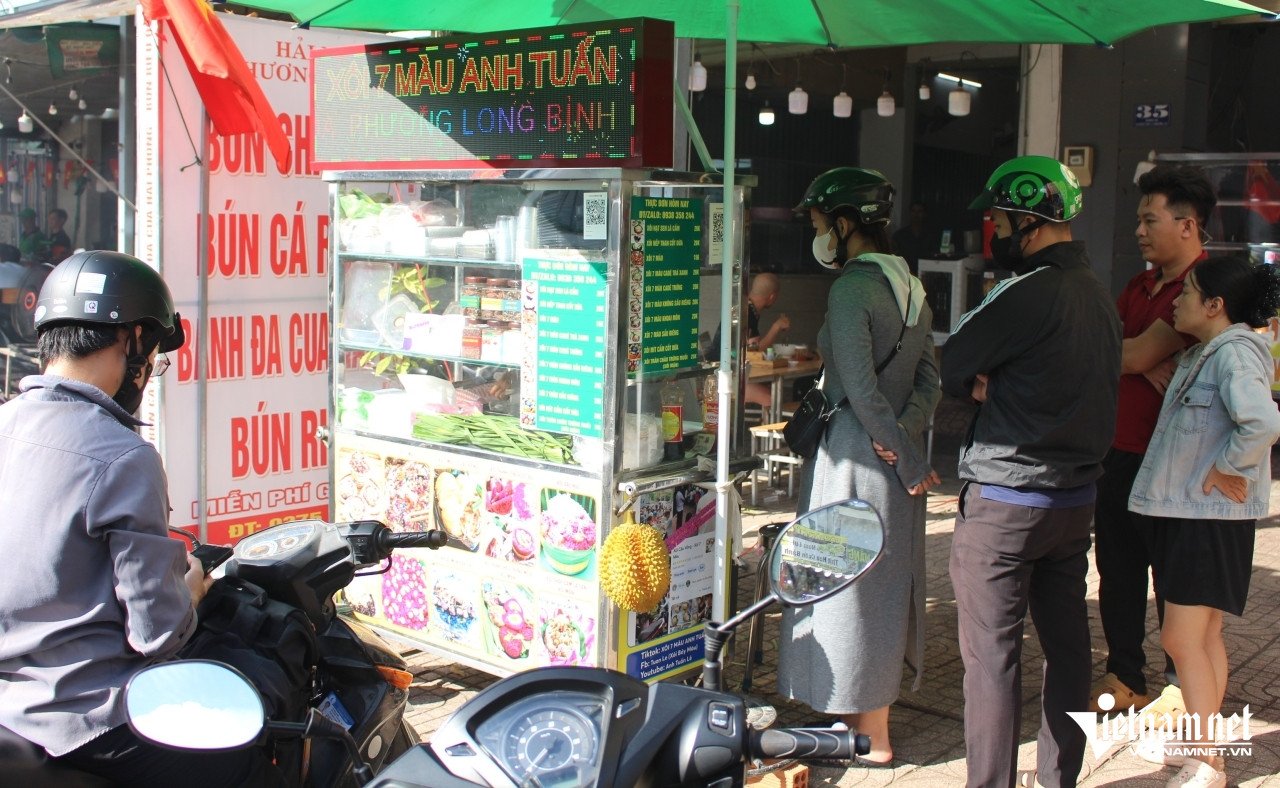
Beautiful sticky rice cart
At 7am, the sidewalk of 9A Street, Long Binh Ward (HCMC) is crowded with people surrounding the small sticky rice cart of Mr. Le Anh Tuan (52 years old). Customers of all ages, from office workers to students, patiently sit in cars, motorbikes or stand in line waiting to buy their favorite sticky rice.
Behind the cart, Mr. Tuan quickly opened the lid, scooped out portions of hot sticky rice onto the tray, rolled them out thinly, and added fillings such as mung beans, lotus seeds, and shredded coconut on top... The fragrant sticky rice, with round glutinous rice grains of all colors, green, red, yellow, purple, orange, white... steamed up, giving off an aroma that made diners exclaim.
Depending on the day, Mr. Tuan prepares many different types of sticky rice such as: lotus seed sticky rice with purple sticky rice, charcoal sticky rice with coconut milk... Among them, the dish most loved by diners is 7-color sticky rice, with attractive variations such as 7-color sticky rice with green tea, 7-color sticky rice with egg and 7-color sticky rice with durian.
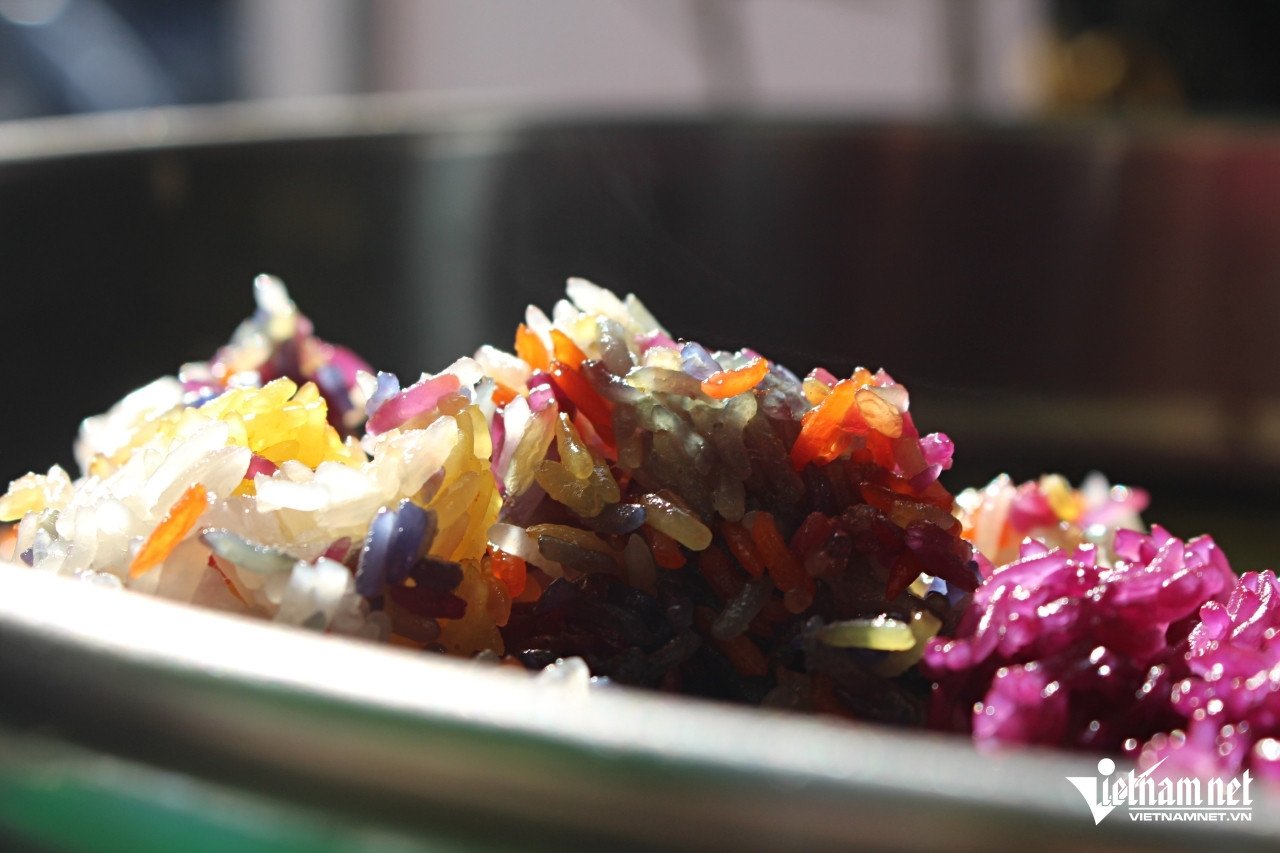 |  |
Here, there is also pearl sticky rice with a 7-color sticky rice outer shell, inside is a large meat and salted egg filling, which is considered delicious, rare, and hard to find... Mr. Tuan's sticky rice dishes cost from 15,000 VND - 25,000 VND/portion.
After about 15 minutes of waiting, Ms. Linh (30 years old, customer) received a package of 7-color sticky rice tied with green pandan leaves.
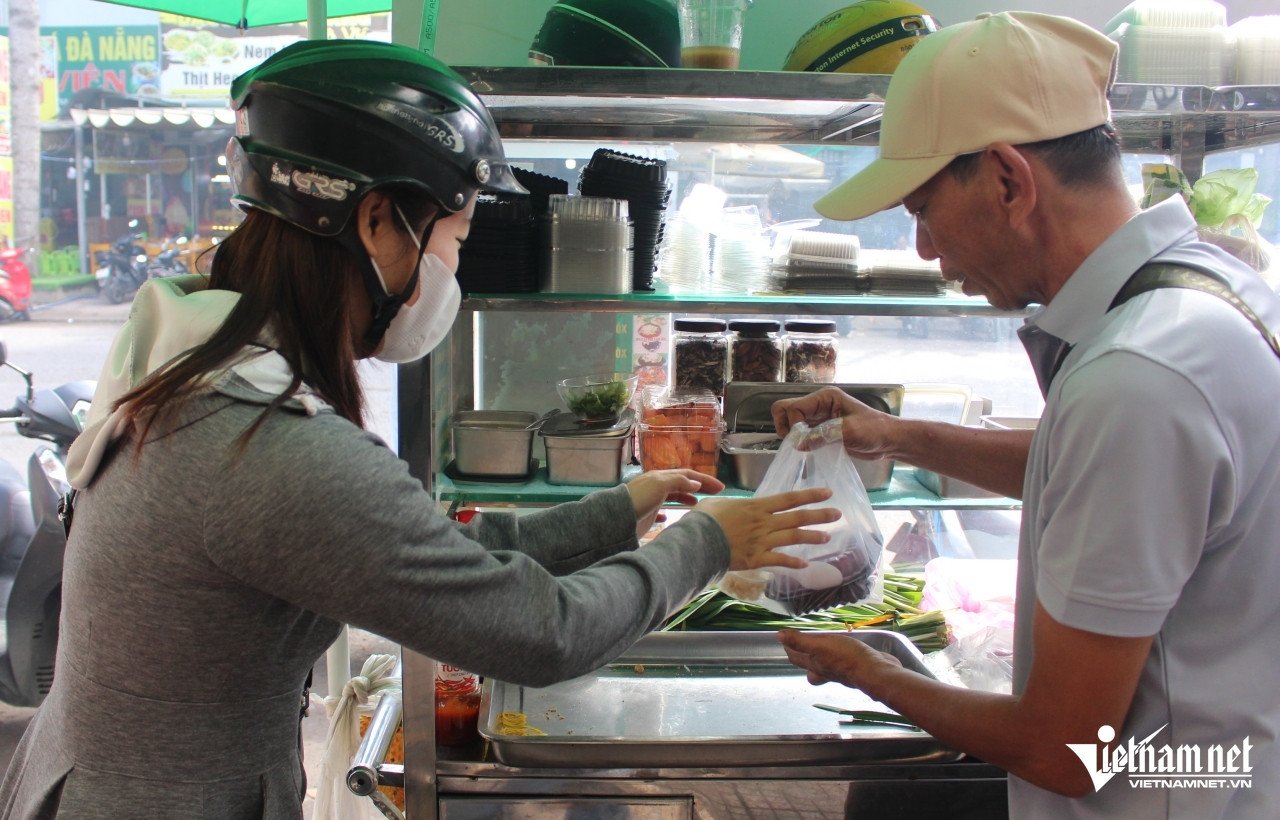
She has known about Mr. Tuan’s seven-color sticky rice for a long time. However, this was the first time she came to experience it. Because every time she passed by, it was too crowded, she could not wait in line for fear of being late for work.
“The sticky rice has a very beautiful and unique color. The rice grains are soft, fragrant and cooked evenly, not dry. The side dishes are also diverse and delicious, so I really like it,” said Linh.

Mr. Tuan learned about the seven-color sticky rice dish when he visited a friend's house in the West. Here, the host treated him to a beautiful seven-color sticky rice dish. The fragrant, sticky rice pot with green, red, purple, yellow colors... left an impression on him and made him remember it forever. During the epidemic, unable to sell, he asked his friend for the secret and practiced cooking seven-color sticky rice at home.
He said: “I choose delicious sticky rice to cook sticky rice. The sticky rice is colored by me from all-natural ingredients such as: orange from gac fruit, yellow from gardenia fruit, dark green from butterfly pea flowers, purple from purple leaves…
Of these, red is the most difficult color. This color is made from chrysanthemum rice. This is a natural food coloring powder made from fermented white rice. It has long been used by Chinese people to create a natural red color for many dishes such as char siu, red bean curd, moon cakes and Chinese sausages.
Secret
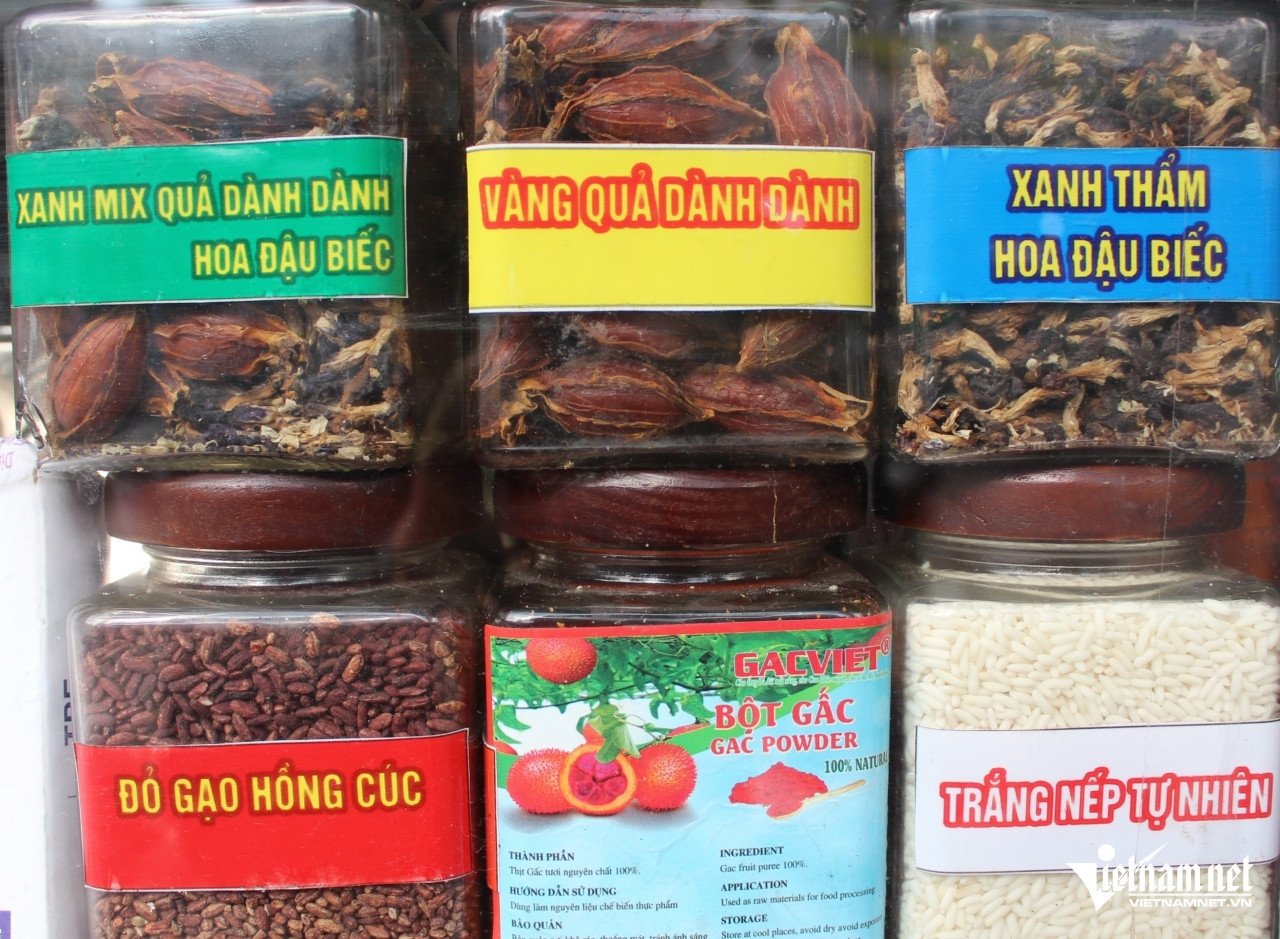
According to Mr. Tuan, cooking seven-color sticky rice is not easy. Without a secret recipe, when cooked, the sticky rice will be discolored and not retain the desired color.
After “dying” the sticky rice, Mr. Tuan put it into a large pot to cook. While cooking the sticky rice, he paid close attention to the temperature.
This is the most important step to have a pot of fragrant, soft, and beautiful 7-color sticky rice. Because, if the fire is high, the temperature will be too high, when cooked, the sticky rice will be discolored. On the contrary, if the temperature is low, the sticky rice will not be cooked or cooked on the outside but raw on the inside.
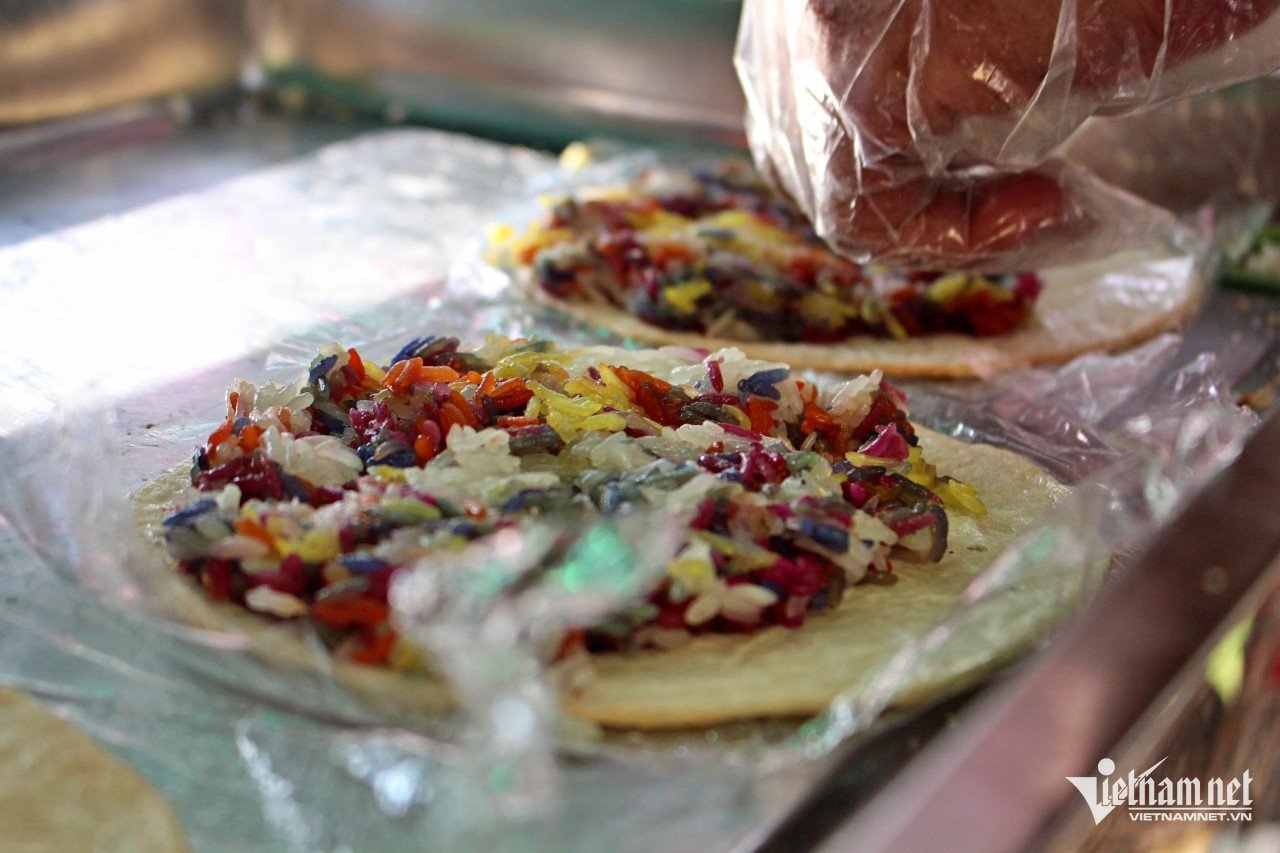 |  |
Mr. Tuan was born in Ho Chi Minh City. In the past, to make a living, he went to Dak Lak province to start a business by selling fish cakes and sandwiches for many years. When he learned the secret of making sticky rice, he decided to change careers.
In 2023, after the pandemic was under control, Mr. Tuan tried to cook 1kg of sticky rice and brought it to the sidewalk in Buon Ma Thuot City (formerly Dak Lak) to try selling. However, seeing the sticky rice with many eye-catching colors, customers thought he used chemical colors so they did not buy it.
To gain the trust of customers, he displays natural coloring materials. He puts these materials in plastic jars, placed in front of a glass cabinet. On each jar, he clearly writes the name and color of the material.
“I also instruct customers on how to differentiate and recognize sticky rice that uses natural or chemical colors. When buying sticky rice, customers just need to put it in a glass of clean water. If after a few minutes the color of the sticky rice dissolves and fades, it is natural color. On the contrary, if the sticky rice does not release color, it is sticky rice that uses chemical colors,” Mr. Tuan shared.
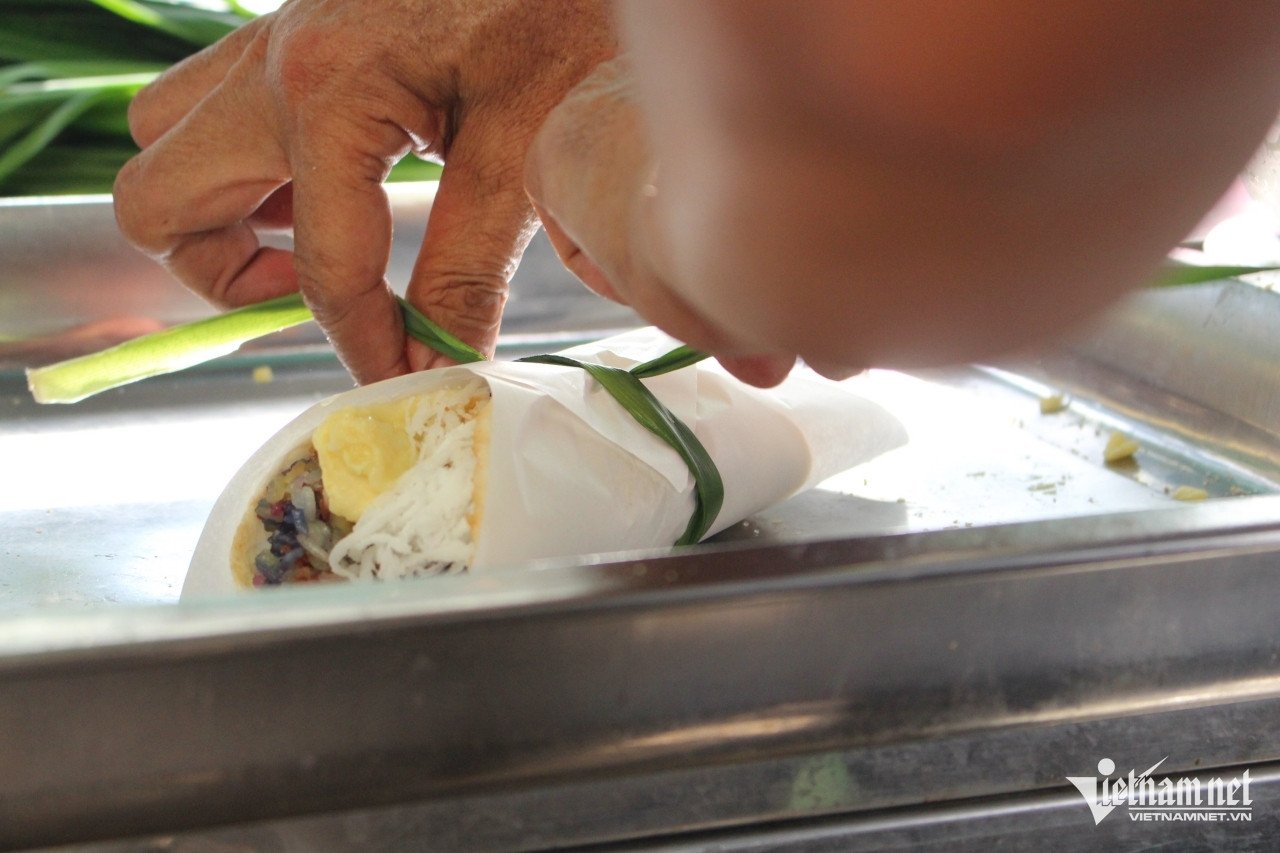 | 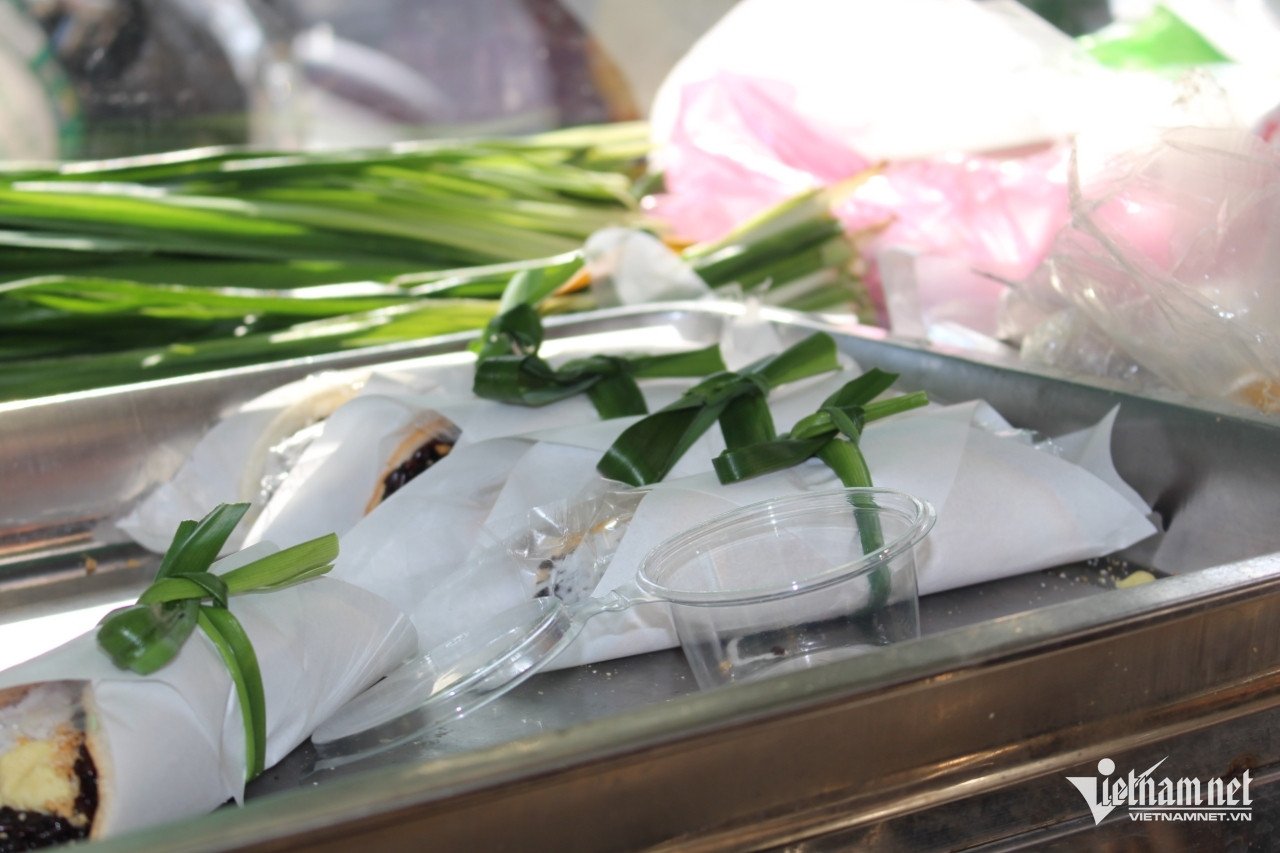 |
This method was initially effective. Not long after, Mr. Tuan’s seven-color sticky rice dish became known to many people. In just a short time, this dish became a favorite.
Every morning, customers wait in long lines to buy Mr. Tuan’s seven-color sticky rice. To meet the demand, he cooks 50kg of sticky rice each morning and sells it all within 2 hours.
“At that time, my seven-color sticky rice was so popular that EBS Korea and Dak Nong TV (formerly) came to film it. However, I later fell ill. In early 2025, I had to return to Ho Chi Minh City for treatment.
When my condition stabilized, I decided to sell sticky rice in Ho Chi Minh City instead of returning to Dak Lak, because I wanted to stay close to and take care of my elderly mother.
Currently, I only cook about 7-8kg of sticky rice every day and sell it for 3 hours in the morning from 6am to 9am. Although it is not as crowded as when I sold it in Buon Ma Thuot City (old), luckily my sticky rice is still chosen and sought after by many customers," Mr. Tuan confided.
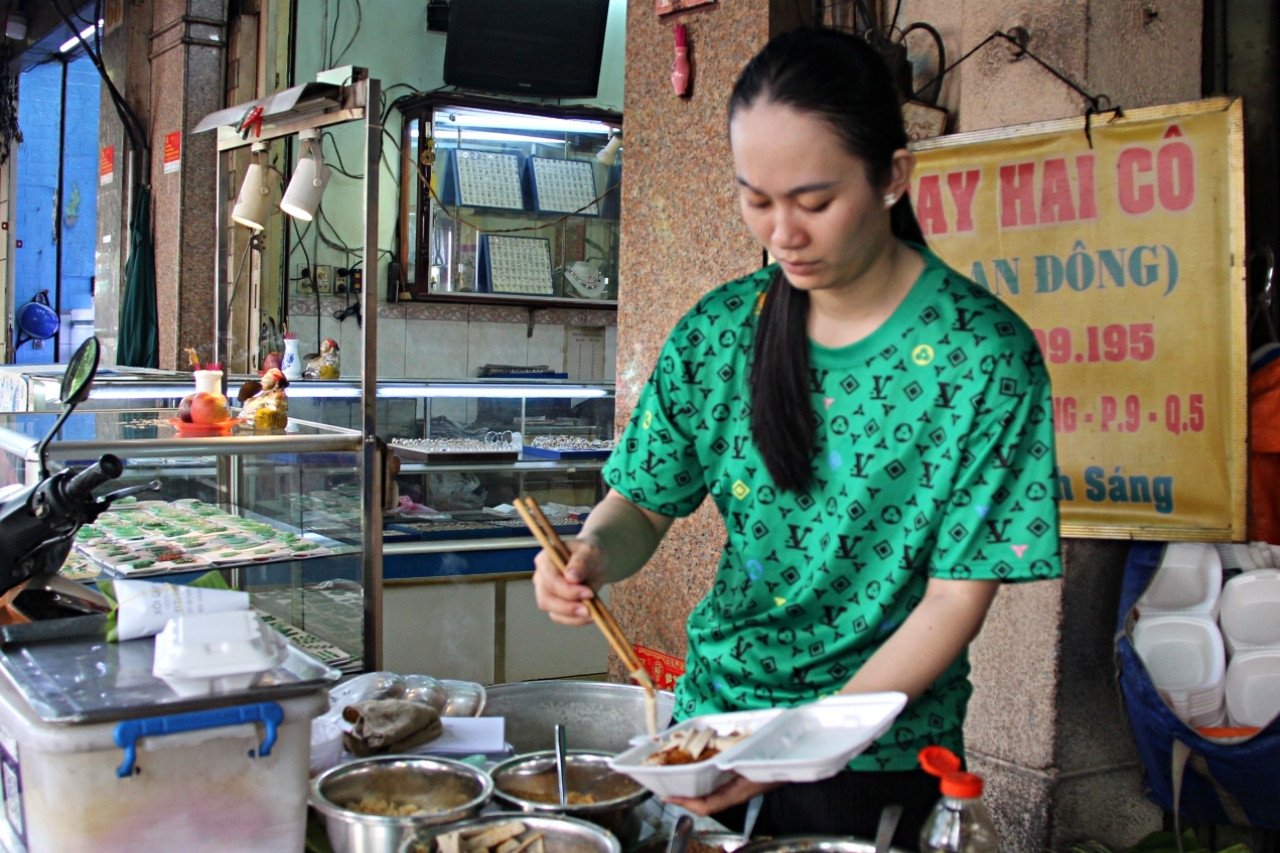
Source: https://vietnamnet.vn/khach-xep-hang-cho-mua-xe-xoi-7-mau-o-tphcm-het-veo-sau-3-gio-mo-ban-2459712.html




![[Photo] Prime Minister Pham Minh Chinh receives the delegation of the Semiconductor Manufacturing International (SEMI)](https://vphoto.vietnam.vn/thumb/1200x675/vietnam/resource/IMAGE/2025/11/06/1762434628831_dsc-0219-jpg.webp)
![[Photo] Hanoi: Long Bien residents brave the rain to go to work and school amid traffic jams due to bridge closures from early morning](https://vphoto.vietnam.vn/thumb/1200x675/vietnam/resource/IMAGE/2025/11/07/1762485038077_dji-0206-1506-jpg.webp)

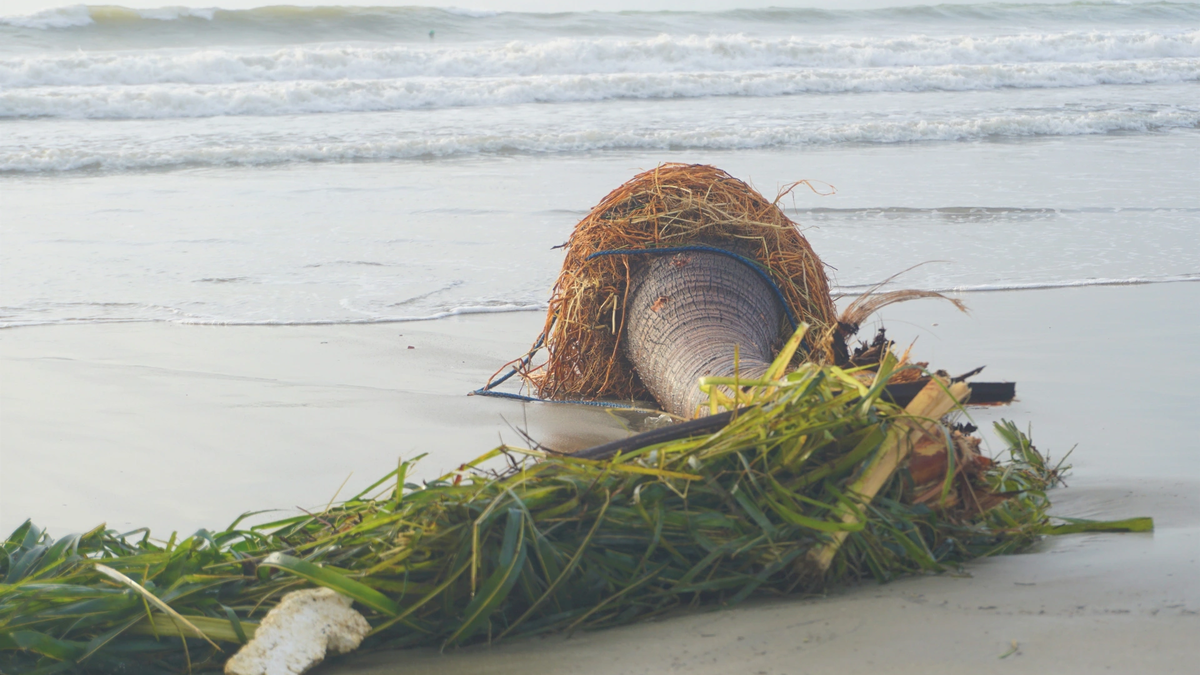
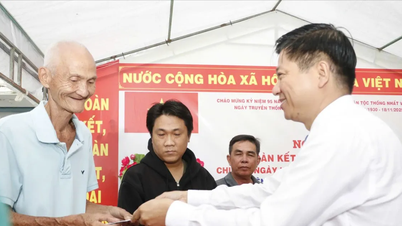


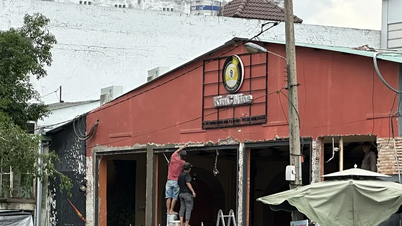


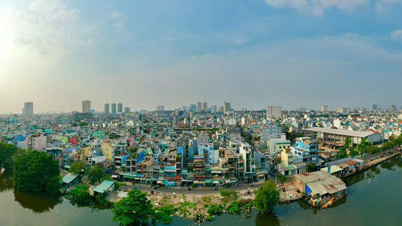




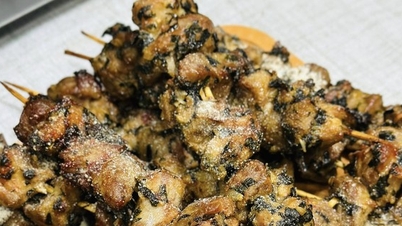





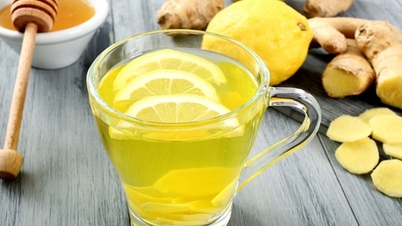
















































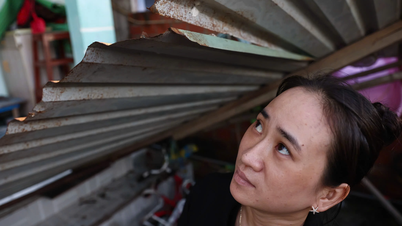































Comment (0)